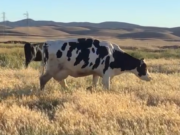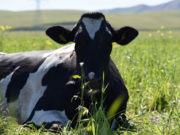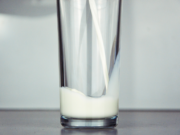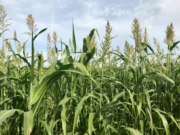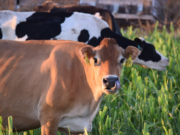
Lactose intolerance is often misunderstood. How much do you know do you know about lactose intolerance; some of the facts may surprise you:
- Lactose intolerance is not an allergy but a digestive issue
- Lactose is a natural sugar in milk made of 2 sugars (glucose and galactose)
- Symptoms of lactose intolerance can include bloating, gas, abdominal pain, or nausea
- Lactose intolerance can be cured
- If you are lactose intolerant, you can still eat cheese and yogurt. The bacteria that fermented tin these foods have already broken-down the lactose as their food
- Lactose is a healthier sugar as compared to fructose and has many health benefits
- Galactose is considered the brain sugar and has been shown to help in brain development of babies. Galactose also is a requirement for the health of your body’s cellular health functioning as the structural substance for cells, cell walls, and intracellular matrix.
- Galactose in Lactose has been shown to prevent tumor growth, enhance wound healing, decrease inflammation, enhance cellular communication, and increases calcium absorption
- Lactose can be considered a prebiotic – feeding the bacteria in your digestive system
- Lactose-free milk is available for people experiencing symptoms of lactose intolerance. It is exactly the same as regular milk only the enzyme lactase is added to pre-breakdown the lactose
- Lactose tolerance is not purely genetic, but also a cultural phenomenon
- Some people have a lactose “gene” which allows them to continue to produce more of the enzyme lactase into adulthood
- Even if you don’t have the lactose gene, you can still digest lactose by growing lactose digesting bacteria in your gut. The microbes can digest the lactose for you
- People of Europeans decent are not the only ones that are lactose tolerant. There are cultures in Asia and Africa that also have no problems digesting lactose. (Think Massai and India)
- 1 in 10 people report themselves as lactose intolerant
- Many people misdiagnose themselves as lactose intolerance when in fact they have other digestive issues
- Misdiagnosing yourself as lactose intolerant and cutting milk will end up causing lactose intolerance over time. You will lose your ability to digest lactose
- Most lactose intolerant people can handle 12g of lactose without noticing symptoms, that’s about 1 cup of milk
- Supplementing probiotics while drinking milk will help alleviate symptoms of lactose intolerance
- Consuming small amounts of milk regularly is a good way to cure your lactose intolerance and start to re-grow the bacteria that will help you digest lactose properly
- Lactose has a low glycemic index making it beneficial for diabetics
- Lactose is one of the healthiest sugars with less conversion to fat due to the fact that it breaks down more slowly and paces itself to the body allowing it to be burned when the body needs it
- Lactose aids in the absorption of minerals such as calcium and phosphorous which are important for bone health.
Sources
http://www.eatconfidentlywithli.org/
Note: many of the sources for these facts are sourced in my previous articles about lactose and lactose intolerance

